Accounting
Taking the helm at the AICPA
Published
3 months agoon
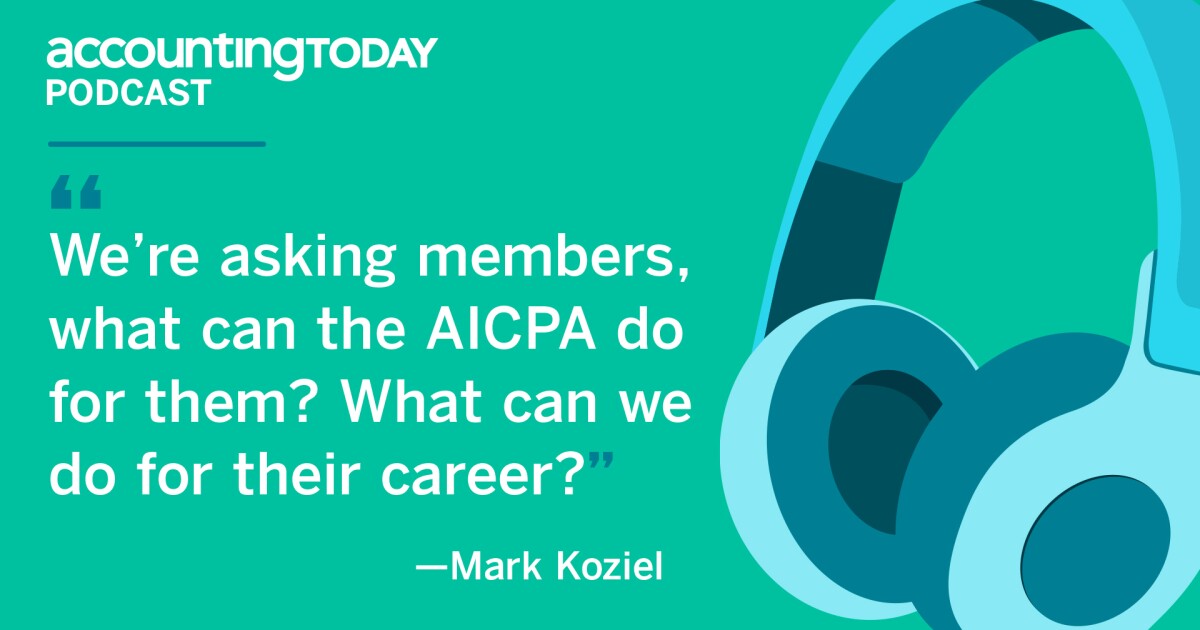

The new head of the AICPA, Mark Koziel, shares his thoughts about the profession, his plans for the organization, and more.
Transcription:
Transcripts are generated using a combination of speech recognition software and human transcribers, and may contain errors. Please check the corresponding audio for the authoritative record.
Dan Hood (00:03):
Welcome to On the Air with Accounting Today. I’m editor-in-chief Dan Hood. The accounting profession marked a major milestone earlier this year with the installment of Mark Koziel as the new chief of the American Institute of CPAs. He brings a deep vein of experience in the profession from his early career in public accounting, the public accounting world of Buffalo, New York to many years as one of the institute’s most prominent public faces, and most recently, a number of years on the global stage as head of major accounting and advisory firm association, millennial global before coming back this year to take the helmet, the AICPA, we’re excited to have him here to talk about its plans for the institute and the association, I should say as well, and his thoughts on where the accounting profession at large is headed. Mark, thanks for joining us.
Mark Koziel (00:43):
Thanks for having me, Dan. Look forward to it.
Dan Hood (00:44):
Yeah. I’m going to start with the simplest of questions. What are your immediate plans for the institute for the next six months to a year,
Mark Koziel (00:51):
Next six months to a year? What’s interesting, Dan, what I took over January one, and we had a few meetings obviously coming in before that, and Barry and I go back a long way and my history with the institute before that, one of the big things is just getting to know the team again, seeing where they all are and as the leader of the profession is the leader of the institute and of the association, the biggest thing is to not get in the way. And so understanding the strategic direction of where we’re at right now, it’s actually a perfect time because the strategic plan for the association runs through the end of 2025. There’s some key initiatives that are on there, things that you’ve been familiar with, with the pipeline, trying to enhance the profession with what we’ve done with das all on the US side, creating better pathways for CGMA through the FLP program, getting better connected with the profession and the future of finance work that Tom Hood’s done.
(02:01):
So it’s really coming in and trying to provide whatever input I can with that, but making sure that we are aligned and moving forward. I had a staff webinar that we did about two, three weeks ago, and that was probably one of the things that bubbled up the most were everyone’s concern that they’ve been driving down this road of strategy for this period of time. Now, am I going to come in and disrupt all that and tell ’em they all have something new to do? And that’s not my job coming in. My job is to make sure that that all continues forward. There have some internal things to focus on operationally that we’re going to take a look at over the next couple of months pipeline. As you know, there’s been some change in the profession around that recently being actively engaged with that. And then finally kind of an exciting time with what’s going to happen in DC with a complete overturn back to a fully Republican administration, Senate House, white House. And no matter if it were Democrat or Republican that had control of all three, there is an opportunity within a year to 18 months to make change before all that gets turned on its head again when you hit midterms. And so a whole new administration in DC to be able to meet with new people at the IRS. And so all of that is really on the focal point of creating those relationships.
Dan Hood (03:38):
So you get a chance to get in on the ground floor of a new administration, a new set of regulators and all that sort of thing. That’s great. It’s interesting though, you talk about with that strong agenda coming in going on with all the pipeline projects and other things that the association, the institute have already been doing, it gives you a little bit of a breathing room to sort of get back into the groove, familiar with the operation and start thinking about what you want to do for the long term. I shouldn’t say start thinking about it. I’m sure you’ve been thinking about it for quite some time, but when you look beyond that current agenda playing out through to 2025, what are some of your long-term hopes for when you think about things? What are the things you are thinking about for the long-term future? And I keep saying the institute because mired in the past, but I know it’s the association since the combination with CIMA. So when I say institute, pretend I’m saying association.
Mark Koziel (04:27):
Yeah, no, I get it. And I slip up every now and again too, being there in the past. But one of the things that I felt was very important to me coming in, and that was part of doing staff webcast internally that came after, I’ve already asked the team for feedback of advice that they would give me coming into the role. What would they like to see differently? We’ve done the same thing on the member side, and we’re going to continue to have all of these different ways to connect with members. I am asking for member input very directly to me. We created an email address ask [email protected], and we’re using different channels to get that. I’ve already had, we’ll call it inside of 500 responses to that before we even advertised it fully. I have answered the majority of those personally up to, I think I’m inside of a hundred left to answer, and I’m going to try and get to those before I get to the town hall tomorrow.
(05:37):
But it’s important to me. I want to understand that. So asking our members what can the AICPA do for them? What could we do for their career? And then what can we do for the profession? And the amazing part of that was how appreciative they were of me just asking, but now, okay, what am I going to do about it? And that’s going to help set the tone of what that long-term future is. It’s not entirely up to me. I am, but a steward of what the profession wants. Yes, I am a member and I keep saying, this is the greatest profession in the world and it’s up to me to make sure that I don’t mess it up for the next generation. And I think for all of us. And so that long-term future, one of the things that I think we could do a better job of, and I’m starting to get a sense of this from some of the members we’ve spoken to, is a better sense of community.
(06:32):
We are such a big profession, 400,000 in the us, 600,000 globally, and our members do all kinds of different things. In my 30 year career, I have done a ton of different things as a CPA and I have always said this, and it was a frustration of mine back when I was with the institute before is I feel like we always trying to have one message to send out to our entire membership. And so we create a message that we think hits in the middle and it misses everybody on both sides. And so because of that creating, and I learned this actually from my last five years in the league, we created communities a sense of a place where people could go for that one specific topic that really aligned who they were, whether it’s audit, tax, business and industry. It could be by industry, okay, I’m in healthcare not-for-profit.
(07:31):
Construction. There are all kinds of different ways to create community, and I think we need to do a better job of that. And then this idea of globalization. I know that’s not a popular word in today’s fire meant, but it’s reality. I’ve said I learned this in a lineal, the amount of global work that was happening between our member firms. So when it was announced that I was taking over at the association, it was October 15th, it was a Wednesday on Thursday, I was getting on a plane to go to Singapore for our global conference. And so I get there and on Sunday we’re having a reception. And I was amazed at the feedback I was getting. I didn’t think our members, our global members were going to particularly care or understand the stature of the association in general. Turns out many of ’em are members because they are the back office support for large global companies in their particular market because those global companies decided they didn’t want to set up a finance operation in that particular country. And so to see the connectivity, and I think what I could contribute even greater as where we’re at today is that connectivity between public accounting and management accounting and make sure we’re driving forward. There is tremendous opportunity there.
Dan Hood (09:05):
It’s really interesting, and you teed this up nicely with a lot of the things you’re talking about, that building community, the breadth and scope of the profession and specifically of the membership of the association. We talk a lot about the responsibilities of the profession. We talk a lot about the challenges facing the profession. But I’d like to take a minute just to talk specifically about the association and talk about its responsibilities and its challenges. I think you touched on some of them and directed towards others. Maybe you start by talking about, as you think about the AICPA, what do you think of as its main responsibilities going forward?
Mark Koziel (09:44):
It is, I mean, steward of the profession, right? Making sure that we are a viable profession for the future, but then also public interest and make sure we’re maintaining a trust within the public interest and protecting the public interest with the corporations that we serve. And so audit being the pillar of trust that we’ve created as a profession that continues and making sure that that expands beyond just the audit function of what we do here in the us, but it’s other things. But then there’s also the question of we audit financial information. What else should we provide some level of assurance to ESG is being talked about a lot. And because of the change in administration currently, there are questions whether or not ESG will continue to have conversation within the us. That’s where I say it doesn’t much matter. And we do have a couple of states that have really kind of pushed forward on sustainability, others that have peeled back, but so many of our companies here in the US who do global business are already subject to some other level of ESG related standard.
(10:57):
And again, can’t say enough why creating the association focused on it globally. CSRD is the regulation of choice currently around ESG that’s in Europe. And many our countries, or many of our businesses in our country here in the US have already made the decision that they’re going to follow that standard for all of what they do. It doesn’t make sense to only do that for their European operations. So even their US operation, they’re going to create it. And then if they’re this large corporation, whether it’s mobile oil or Walmart or any of these others, they all have smaller companies in the supply chain that would also be subject to some level of sustainability or ESG around that. So I do think we need to own that space. We need to make sure that I always compare that to single audit of the federally funded that are out there. The federal government came to us and trusted us to do programmatic auditing in addition to the financial statement auditing back then, and we still do. In fact, we’ve even seen changes where they’re going to rely on our peer review. We can talk about that later if you want, but I think that’s ultimately where we still need to be and make sure that whatever we’re looking at, we’re providing a level of assurance because that’s what the market’s asking for.
Dan Hood (12:25):
So it’s interesting as you talk about that, the need for stewardship and the need to make sure that the profession is moving into those new areas, the areas that really it should be owning mean ESG seems such a natural space for accounts to be in. What are some of of those represent challenges in themselves, but for the association specifically, what association, what challenges do you see? I mean, I’ll give you an example. You talked about the global stage and how global the accounting profession has really become, and that was a challenge in one of the responses was the combination of AICPA and semen that made sense to solve that challenge. When you look forward, what kind of challenges are you seeing for the association
Mark Koziel (13:04):
Technology and making sure that our members have the right technology in their hands. Interestingly, of the almost 500 responses we’ve received so far, especially from the smaller firms, making sure that we put things in their hands that are relevant. And so the creation of cpa.com years and years ago and where it’s evolved to today, to be able to provide that to our member firms, the Dynamic Audit Solution project and how das is going to continue to transform. You bring SOC engagements and risk assurance services under the umbrella of DAS, and not only just DAS of what we could do here in the us, but part of my vision when I left went to Allinial. We had a number of our firms that were on the DAS project, they were part of the initiator firms around it, and it was always our goal then to create an international and IDAS that we could take that globally and that would actually help firms better connect with each other to be able to provide those global audit services or global assurance services as they need to do.
(14:20):
So. I think us trying to stay ahead of technology, also understanding the bell curve. Somebody had asked me to grade us on helping our members transform or progress around it. I think when we were at cloud, dad, you were around for this. You’ve been to the executive round tables, probably going back 14 years when they were started. And back then we were talking to the technology C-suite, the executives of these technologies companies saying, y’all need to talk better to each other because your technologies aren’t talking to each other. And it’s created a real problem in the profession and getting the advent of cloud and moving all that forward. Well, 14 years ago, there were far less firms that were in the cloud than are there today. And so when people ask me to grade us, I said, well, the grading is no different than the bell curve. For some firms we’re an A for some we’re A, B, C, D because it is their comfort level of adopting. We just have to make sure we’re not too far ahead of the profession that we don’t have anyone coming along. But being at the right edge of that to allow for innovators and working actually with the innovators, I think side by side so that we could bring that to the rest of the profession and make sure that they have access to it.
Dan Hood (15:42):
Yeah, it is strange, but it is. It’s that bill curve, right? Because huge, every portion of the membership is at a different stage. So calibrating your position in the middle has got to be a difficult balancing act there. But very cool. I want to expand this conversation. We’ve talked a lot about the association and what’s going on there and what you’re thinking about there. I want to take it a little broader and talk about the profession. We’re going to take a quick break before we do that, but before that break, I’m fascinated by the questions. I love that idea. I think it’s a great way to establish yourself and get back in touch immediately with the membership. Any trends there? Any themes that you saw a lot of in those letters or anything that stand out or any letters where you’ve instituted an order of protection to protect yourself? Anything like that?
Mark Koziel (16:29):
What’s interesting, everything that’s old is new. Again, don’t forget about the small firm and then especially from the town hall. Town hall populated a number of those 500 that are there. But also we were able to put the things into theme block buckets, even if it’s CMA, because we were doing CMA and AICPA, the association in total, it’s going out in different venues that way, but you could start to bring it back together. So that sense of community definitely is coming through on that help with research, help with ai, help me get through these particular things is a theme. Also enjoying the benefit of it, probably because it was the town hall community that we started it with the value of the town hall and how important it was for us to connect with our member in a different way. And so if you think back, and it was many had forgotten that I actually helped start that with Eric Asgeirsson, where we did it, which is okay, Lisa’s more than taken my position in second chair in that environment.
(17:34):
But we did it around PPP because our members were scared, to be honest. We were all scared. It was in the middle of the pandemic PPPs coming out, their clients are calling them left and and we said internally, we need to be speaking to our members more frequently and we need to tell them when we know something. And more importantly when we don’t, because if we’re not talking to them at all, because we don’t think we have anything to say, our members are sitting back saying, where are they? Why aren’t they telling me anything? They must know something. And then to be able to create the relationships as we did inside of treasury with Blake Falter and who was writing the res at the time and finding out what he could tell us and what he couldn’t tell us because the attorneys wouldn’t let ’em. All of that created this. Now, let see. I think they’re close to 12,000 participants weekly. And so again, that brings me back to why community matters. We could be doing more of that if we can just get to a community and find them in a different way.
Dan Hood (18:43):
Well, and that really, the town hall has really become an extraordinary success. Enormously useful at the time, as you say, a very scary time. But even now for the last couple of years where things are a lot less scary, it’s still enormously useful and a great tool for communication and keeping people up to speed. Like I said. We’re going to take a quick break, but then we’ll come back and talk a little bit more with Mark Koziel. And we’re back. We’re talking with Mark Koziel. He’s the new head of the AICPA and CIMA, the association. I’m not going to call it the institute. I’m going to try to do a better job of remembering that, keeping up with the times just installed this year, but a long time. Lots and lots of years and years of experience with the AICPA and with the profession. And to that, we’ve talked a lot about the association. I want to broaden our viewpoint a little bit and talk more about the profession. We’ve raised some of these topics where you talked about the pipeline and stuff like that. But as you look ahead, how would you round out that list of challenges that you’ve sort of talked about in passing as all through our earlier conversation, pipeline technology, ai, sort of other things. Are there other areas you’re looking at as challenges for accounting?
Mark Koziel (20:00):
No, I think AI definitely, definitely is one of ’em. Succession still pops up in our member firms. No doubt. Private equity is something that we’ll stay focused on. I know the professional Ethics executive committee just came out with a discussion paper to talk about the alternative practice structure that’s there. So as ownership structures change within the profession, make sure again, we’re maintaining that level of quality and that we’re maintaining that level of public trust around who it is and what we do. So maintaining that and seeing as the transition of the business model continues to happen, helping our member firms through that. I think in the CGMA world with the finance program, the FLP, and getting people upskilled faster, one of the things I was reflecting on recently when we were talking about what skills we’re asking of the new professional today coming out of school, I said, okay, well the kids aren’t ready today. And I said, well, why aren’t they ready? Well, if you think about it, what we’re asking them to do from the day they start inside of their new organization is data analytics. It is communication. It is being able to take a complex thing and make it explainable to others, whether it’s a client or other business owners inside a corporation. When I came out of school, I was asked to make copies at the copy machine of AR confirmation. I don’t think I was asked to sit down and do data analytics.
Dan Hood (21:43):
No. But even at that time, even 30 years ago, accounting firm leaders said, these kids don’t even know how to make copies. What are they
Mark Koziel (21:49):
Doing? That is true. That is true. They did say that doesn’t even know how to use a 10 key, which by the way, I still have my original 10 key in my office at home, and I still use it and I’m still fast on it. In any event, I do think that what we’ve asked of our kids today is more complicated. We have to think of training differently, and if we don’t, we’re going to lose our way. I remember talking to, it was actually one of our member firms in Australia, and the gentleman running it came from the banking industry, but he was an accounting major, running a firm. But in his days in banking, he started out and I forgot which bank, HSBC or one of ’em, and ended up here in New York. And I said, well, why’d you go the banking route rather than going into public accounting?
(22:43):
He’s like, they offered me more money. I’m like, well, that’s how I chose the firm than I chose. Of the five firms that made me an offer was one that offered the most money, and that’s typically how kids see it. But one of the things he found interesting when he got into the firm environment, now, he said, when I started in banking, it was six months, easily six months before I even touched my first banking client to be able to interact with. For six months I was in training. And in the CPA world, we think we could get that done in two weeks and I’d say good luck. And so I do think some level of stimulation, training, training up earlier to make that happen. These are some challenges that we really need to focus up.
Dan Hood (23:31):
Gotcha. I want to talk a little bit more about how ready the profession is for some of these challenges. And you touched on a little bit earlier, but before we do that, you mentioned private equity, and I just want to briefly touch on that. I know you were paying a lot of attention to it. A lot of your members, millennial were looking at or actually took on PE money, so I know you were paying a lot of attention there. Obviously there are some concerns about how it will impact the profession As you look at it, what do you think firms should be thinking about as they approach the concept of private equity and their possible participation in it?
Mark Koziel (24:08):
As you can imagine, especially being the head of millennial Globe, I received a number of phone calls on this topic from our member firms that are variety awaits, first and foremost as the CEO of a firm. They have some level of a duty to their partners to at least consider what’s happening out there. And it’s up to the owners of the business and decide which way they want to go. And I would have people say to me, well, are you for or against private equity? I said, I have no opinion. Because there are firms, it’s either right or wrong for the individual firm. It may not be perfect for everyone who’s out there now wearing the profession hat that I do now. I want to make sure that the profession is well positioned to make sure that it fits well with where the profession needs to be.
(24:56):
But even back then, I’d say in the firms, if you want to remain independent, remain independent, that’s great. But there are two things you need to get right. Number one, need to get your governance in order. And then on top of that, you need to make sure you’re investing in technology. Those are the two big pieces, and we’d have a lot of conversations around that. And then we would talk about how to fix governance, put that on the other side. For those who are in private equity, I’m getting word of what they’re liking about it, not things that they necessarily don’t like, but that are different that they weren’t used to. Right. Change is hard for anybody. And what they like about it is they now have a board, a diverse board of technical background. It’s not just a bunch of CPAs sitting around protecting their audit business, tax business and the like.
(25:47):
They have business leaders from the private equity space from other portfolios. They may have a technology expert sitting on their board now, they may have some level of an industry expert sitting on their board. And then the accountability has changed greatly. And so private equity looks at it from a net margin perspective contribution to the organization, not hours, times rate. So there are some positive changes, I think, to that. But any firm can fix that on their own if they decide not to go through the private equity route. But those are the things they need to understand that they have to get right if they’re going to survive well into the future.
Dan Hood (26:32):
Right. Well, and it’s interesting you talk about that. A lot of people are talking about the positives. All the people, all the firms I know that have taken PE when we’ve talked to ’em even off the record, nobody has anything bad to say thus far. And I think to a certain extent, that’s because the current deals are the best firms with the smartest PE firms. So the question is, at some point, does it reach point where PE firms that aren’t as smart or aren’t as well prepared or haven’t thought through their thesis as well start working with accounting firms just because everyone’s supposed to work with accounting firms. But so far it seems to be the experience seems to be almost uniformly positive.
Mark Koziel (27:06):
Sure, yeah. And that’s what we’ve heard too. And everybody, all of the people sitting on the sideline or have anything to say to speculate on private equity, well, we are really not going to know if it’s worked until we have the first flip. Well have our first flip. So let’s see how that goes and if there’s other flips and what that starts to look like. Who’s going to own it? I will tell you, Dan, in the last five years, the number of firms that we had in millennial that did go to private equity continued to grow. And it was in several different markets, Netherlands, Belgium, Germany, UK is where it started. Our member firm had been in private equity there for years before I even joined millennial. So it’s out there. Australia started to be a hot market for it. It is all around us. So it’ll be interesting to see how that continues to move forward.
Dan Hood (28:04):
Definitely. Definitely. Alright, I appreciate all the time you’ve given us. I want to give one last question. You talked a little bit about what we’re expecting of young accountants, what they need to be doing as they enter the profession, the things they’re going to need to know. When you look at the profession as a whole, and I think someone’s asked this before about sort of ranking the profession, but as you look ahead, how ready would you say the accounting profession is for the future? And maybe what are some of the things you think that it needs to do to get better prepared for what’s coming?
Mark Koziel (28:35):
I always think we could get better, but I still maintain from this day, from the day I entered this profession in 1991. This is absolutely the greatest profession in the world outside of news media. Of course.
Dan Hood (28:55):
Well, that goes without saying, obviously you’re
Mark Koziel (28:56):
Right. But I think we all need to understand our responsibility for the future of the profession. And I’ve had so many of these conversations, especially recently, because there are so many members who have come to me and say, well, what’s the A CPA doing about the pipeline? And I said, well, what are you doing about the pipeline? Right? And I used to drive me crazy when I was in practice and I listened to a partner when a client called up and a client is actually the partner is almost nasty to the client because the client, how dare they call them during busy season? They know how busy they are. This moniker of how busy, busy, we’re always busy and we feel like we own busy, but we don’t. You know this. And from my background, people don’t know. I spent three years in political media and public affairs. You want to know busy working a political firm doing TV and radio in an even year in this country. And you will know busy because at three o’clock in the morning, I am sitting in front of my computer waiting for the ad to pop through so I can make sure it’s got the right taglines on it so we could get it up and on air by 5:00 AM in two hours basically from where we’re at. And that just kept cycling and cycling and cycling. And by the way, there are no extensions in politics.
(30:33):
That is the day and that’s it. And so there are several different types of jobs that are out there that are busy. I think we could be better. Compression is an issue. I don’t want to discount that from anyone. And those are things we’re trying to work on. And there’s a few good things happening in DC that I think we may see some slight changes to this year, but it’s still the greatest profession in the world. You have so many opportunities. CPA is not going away. AI is not going to eliminate what we do. We’re just going to have to make sure that we embrace it and that we help it and help our clients better navigate it as we move forward. So we’re still going to be here. I love it. I try and get one of my friends’ kids to love it too. And I have eight kids I mentor today. That’s why I say to other members, how many kids are you bringing along? If each one of us 400,000 members, if each one of us just convinced one kid doesn’t even have to be our own convince one kid, we’re going to be a much bigger profession than we are today.
Dan Hood (31:38):
Excellent. And an excellent point. The profession’s future is in the hands of all of its members, right? So great. Excellent. Mark Koziel, thanks so much for talking with us. We’re looking forward to seeing all the exciting things you’re going to do with the association and keeping an eye on that going forward. Again, Mark Koziel of the AICPA and CIMA. Thanks for joining us and thank you all for listening. This episode of On the Air was produced by Accounting Today with audio production by Adnan Khan. Rate and review us on your favorite podcast platform and see the rest of our content on accountingtoday.com. Thanks again to our guest and thank you for listening.
You may like


The tax reconciliation bill making its way through Congress is expected to add trillions of dollars to the national debt, but the Trump administration hopes to offset the cost through income from tariffs. Accountants are helping worried companies deal with the possible fallout.
“Obviously, tariffs create a lot of uncertainty,” said Tom Alongi, a partner and U.S. national manufacturing practice leader at UHY, a Top 50 Firm based in Farmington Hills, Michigan. “But with uncertainty for U.S. manufacturers, it creates a lot of opportunity. And for those that are contract manufacturers that use a lot of offshoring, it creates a tremendous amount of angst, especially among the auto industry that really over the last three decades has turned into a global supply chain as we’ve been in a race to the bottom to reduce costs.”
UHY has been helping CFOs deal with the changing tariff policies coming out of the White House. “A lot of companies don’t even realize how deep some of their supply chain and where some of their raw material and purchased components ultimately originate,” said Alongi.
That involves quantifying the impact, understanding the origin of components and raw materials, and where that fits in the Harmonized System that’s administered by the International Trade Administration, making sure everything is classified correctly.
The Trump administration hopes to convince more companies to relocate their manufacturing operations to the U.S. But companies are also looking at changing their sourcing to other countries if they’ve been relying too heavily on Chinese-made supplies amid the ever-changing tariff pronouncements.
“That uncertainty does create challenges within our clients of allocation of capital,” said Alongi. “Do I make big bets to transition if I have a huge amount of risk that is isolated in a certain country? What do we potentially do to mitigate that risk?”
Auto manufacturers need to look at the proposed changes to tax credits in the tax bill, including reductions in electric vehicle tax credits and other tax incentives for renewable energy.
“I always knew that it is a great alternative source that fits certain consumers, but I never believed that it was going to take over the world,” said Alongi, who has been driving an EV for over seven years. “The tax credits create a behavior, and they incentivize people to drive electric.”
The shortcomings in the national infrastructure for charging EV batteries disincentivize broader takeup, and the disappearance of the tax credits would make the vehicles even less affordable.
CBIZ, a Top 10 Firm based in Cleveland, launched an
“Like so many other middle-market companies, certainly the larger companies, in this environment, there’s more demand for advice on mitigating exposure,” said Mark Baran, managing director of CBIZ’s National Tax Office. “Tariffs have been relatively low for a long time, and now the supply chain, pricing, vendor relationships and locations of where goods are manufactured need a fresh look.”
Different industries are looking for help, including manufacturing, construction and import. “They’re really looking at how to mitigate these costs, which don’t appear to be slowing down,” said Baran. “It could be temporary, but it’s not right now. So we have developed a number of different avenues to assist our clients, whether it’s evaluating inventory and how to properly account for inventory, whether it’s seeking to help them find locations in the U.S. if they want to bring their manufacturing back to the U.S. and do that in a tax efficient manner. We’re looking at intercompany transactions and layering transfer pricing concepts onto customs, seeing if we could help with savings in that regard. Depending upon what a client does and their structure, there’s probably a number of ways you can tackle tariffs and get ahead of it. “
Customs valuations are important. “It’s really ensuring that you have an accurate customs valuation, and oftentimes that wasn’t looked at accurately, and there are savings that can result from that,” said Baran. “These are considered an intercompany framework, oftentimes on the businesses that are most impacted by this. Looking at that structure is another way of doing this, not just not just transfer pricing, but location-based analysis. It’s taking what has been decades of international tax knowledge and layering on customs, and that’s providing a framework that’s been tested and works and is valuable.”
Baran has also been keeping a close eye on
Accounting
Fastest-growing accounting firms spend double on marketing
Published
5 hours agoon
May 21, 2025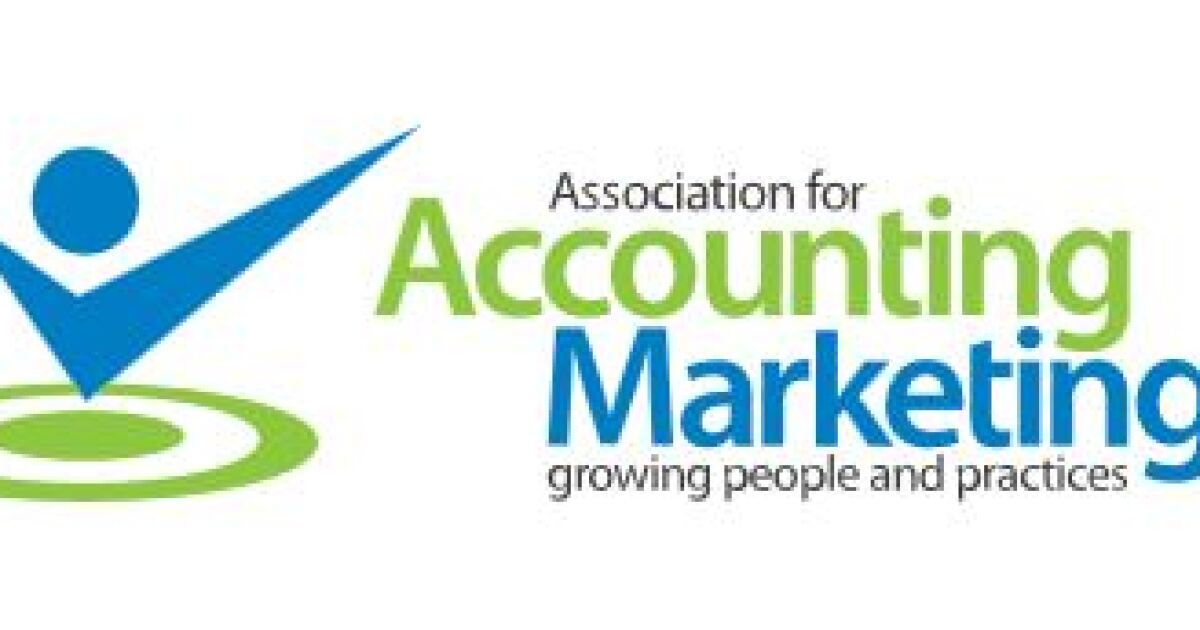
The fastest-growing accounting firms spend twice as much on their marketing budget than all other firms, according to a new
The Association for Accounting Marketing, in collaboration with the Hinge Research Institute, surveyed over 87 firms — representing 1,037 offices and 66,000 employees — about the drivers behind the marketing performance of the fastest-growing firms.
High-growth firms invest two-thirds more in employer branding and recruiting, and they budget more for conferences and events, the data found.

When it comes to marketing budgets, the fastest-growing firms spent 2.1% of their revenue versus low-growth firms, which spent 1%. Some of that money is invested in marketing teams. High-growth firms have a higher ratio of marketing staff to full-time equivalents (1:49) compared to other firms (1:57). However, the average salary of a high-growth firm team member is 27% less than at the slowest-growing firms.
“When it comes to marketing, the accounting industry tends to be risk averse and invests less than most other professional services industries,” Liz Harr, managing partner at Hinge, said in a statement. “But the data shows that those that spend more on marketing are getting superior results.”
High-growth firms also spend 66% more on
(Read more:
Finally, the fastest-growing firms spend 21% more of their marketing budget on conferences and other in-person events than their peers, with high-growth firms allocating 30% of their budget versus low-growth firms allocating 25%.
“Today’s high-performing accounting firms are taking a somewhat more balanced approach to marketing,” AAM president Laura Metz said in a statement. “Digital and content marketing budgets are on the rise, but perhaps more than anything, high-growth firms are focused on nurturing relationships in person, whether at industry conferences or their own client appreciation events. These gatherings aren’t just line items, they’re growth strategies where the strongest connections, best leads and boldest brand moments take shape.”
Accounting
Trump says tax bill ‘close’ as holdouts threaten to sink it
Published
6 hours agoon
May 21, 2025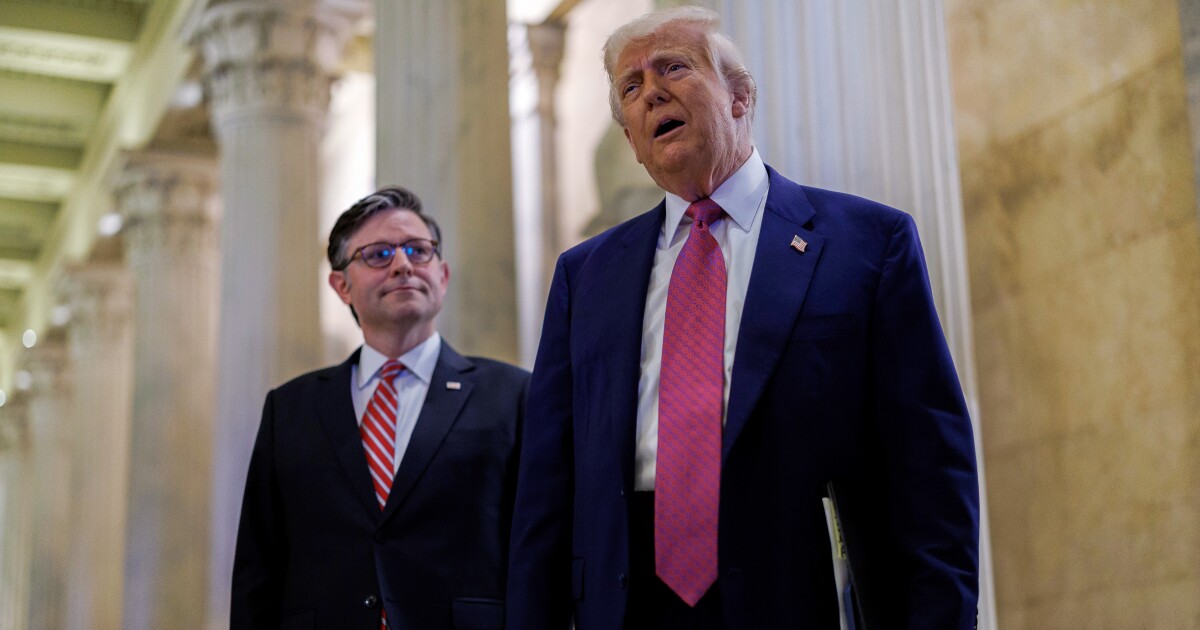

President Donald Trump said his massive tax package is close to being finalized, having notched a deal over the state and local tax deduction, but the White House has yet to win over a faction of conservatives who want more austere spending cuts.
“We’re doing very well. It’s very close,” Trump told reporters Wednesday.
House Speaker Mike Johnson announced Wednesday that he had an agreement with lawmakers from high-tax states to increase the limit on the SALT deduction to $40,000.
“The members of the SALT caucus negotiated yesterday in good faith,” Representative Mike Lawler, a New York Republican, told Bloomberg Television. “We settled on something that we believe in, we support.”
However, several hardline Republicans said House GOP leaders aren’t honoring concessions the White House promised them and are threatening to tank the bill.
But the White House says they never made a deal, instead presenting some of the conservative holdouts with a menu of policy options that the Trump administration can live with, a White House official said.
The White House made clear to conservatives they would have to persuade their moderate colleagues to sign onto those ideas, the official said, a challenging feat given Republicans’ narrow and fractious House majority.
Trump and Johnson plan to meet with some of the ultraconservative lawmakers at the White House at 3 p.m., a person familiar with the plans said. That meeting will be an opportunity to strike a deal, the Trump official said.
Ultraconservative Representative Andy Harris of Maryland cast the conversations with the White House as a “midnight deal” for deeper cuts in Medicaid and faster elimination of Biden-era clean energy tax breaks.
“I’m sorry, but that’s a pay grade above the speaker,” Harris said.
Harris said the bill doesn’t reflect that agreement and hardliners will block the package if it comes to a vote. Representative Ralph Norman, an ultraconservative from South Carolina, said the bill “doesn’t have the votes. It’s not even close.”
Freedom Caucus members said they aren’t moving the goal posts by asking for more spending cuts than the budget outline they already voted for. They said they want to rearrange the spending cuts to focus on ending “abuse” in Medicaid and immediately ending green energy tax breaks.
House Republicans leaders are also planning to accelerate new Medicaid work requirements to December 2026 from 2029 in a bid to satisfy ultraconservatives, according to a lawmaker familiar with the discussions.
How deeply to cut safety-net programs such as food assistance and Medicaid health coverage for the poor and disabled has been a sticking point in reaching agreement on Trump’s tax bill, as Johnson attempts to navigate a narrow and fractious majority.
Harris and Norman spoke shortly after Johnson announced the SALT agreement on CNN.
Johnson said there is “a chance” the package could come to a vote Wednesday.
But several ultraconservatives cast doubt on that. “There’s a long way to go,” said Representative Chip Roy of Texas, another Republican hardliner.
The speaker can only lose a handful of votes and still pass the bill, which is the centerpiece of Trump’s legislative agenda.
The $40,000 SALT limit would phase out for annual incomes greater than $500,000 for the 10-year length of the bill, Lawler said. The income phaseout threshold would grow 1% a year over a decade, a person familiar with the matter said.
The cap is the same for both individual taxpayers and married couples filing jointly, the person added.
Another person described the income phase-out as gradual, so that taxpayers earning more than $500,000 would not be punished.
Several lawmakers — New York’s Lawler, Nick LaLota, Andrew Garbarino and Elise Stefanik; New Jersey’s Tom Kean, and Young Kim of California — have threatened to reject any tax package that does not raise the SALT cap sufficiently.
The current write-off is capped at $10,000, a limit imposed in Trump’s first-term tax cut bill. Previously, there was no limit on the SALT deduction and the deduction would again be uncapped if Trump’s first-term tax law is allowed to expire at the end of this year.
Johnson’s plan expands upon the $30,000 cap for individuals and couples included in the initial version of the tax bill released last week. That draft called for phasing down the deduction for those earning $400,000 or more. That plan was quickly rejected by several lawmakers from high-tax districts who called the plan insultingly low.
The acceleration of new Medicaid work requirements could become an issue in the midterm elections — which fall just one month earlier — with Democrats eager to criticize Republicans for restricting health benefits for low-income households.
House leaders’ initial version of legislation pushed back the new requirements until after the next presidential election.
The earlier date for the Medicaid work requirement could alienate several Republicans from swing districts concerned about cuts to the healthcare program. It is also likely to provoke a backlash in the Senate.
It will be very difficult for states to implement the work requirements in a year and a half, said Matt Salo, a consultant who advises health care companies and formerly worked for the National Association of Medicaid Directors.

Stocks making the biggest moves after hours: LUMN, SNOW, ZM, URBN

SNAP benefits, food stamps face cuts under GOP tax bill

Tariffs collide with taxes in Trump bill

New 2023 K-1 instructions stir the CAMT pot for partnerships and corporations

The Essential Practice of Bank and Credit Card Statement Reconciliation

Are American progressives making themselves sad?
Trending
-

 Economics1 week ago
Economics1 week agoCPI inflation April 2025: Rate hits 2.3%
-

 Economics1 week ago
Economics1 week agoTariff receipts topped $16 billion in April, a record that helped cut the budget deficit
-
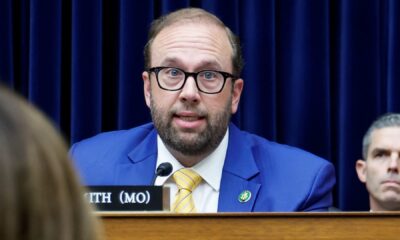
 Personal Finance1 week ago
Personal Finance1 week agoHouse Republicans advance Trump’s tax bill. ‘SALT’ deduction in limbo
-

 Economics6 days ago
Economics6 days agoViolent crime is falling rapidly across America
-

 Personal Finance1 week ago
Personal Finance1 week agoFidelity technical issues kept some investors out of their accounts
-
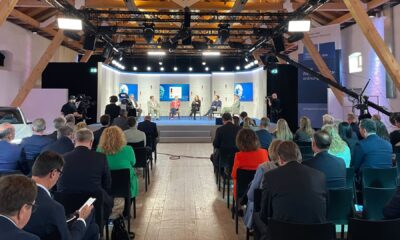
 Economics1 week ago
Economics1 week agoGerman business leaders tell new government: It’s time to deliver
-

 Economics5 days ago
Economics5 days agoThe low-end consumer is about to feel the pinch as Trump restarts student loan collections
-

 Personal Finance1 week ago
Personal Finance1 week agoHow to save on groceries amid food price inflation
